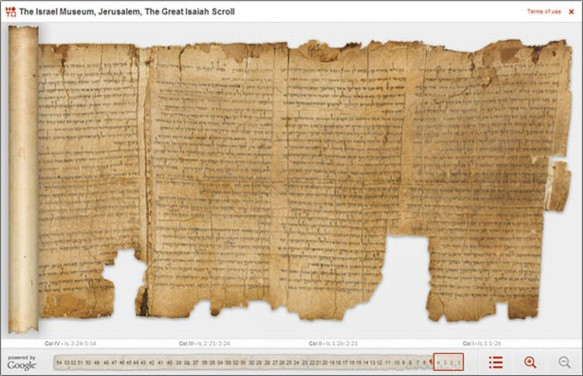Dead Sea Scrolls Come Alive on Internet

A partnership between Google and the Israel Museum in Jerusalem is putting the Dead Sea Scrolls online around 2,000 years after they were written.
The Israel Museum in Jerusalem owns the most complete scrolls, while smaller selections are owned by private collections and organizations. A secured building called the Shrine of the Book is the house of these documents. The scrolls exhibited at the museum are the 950 discovered in 11 caves on the northwestern shores of the Dead Sea between 1947 and 1956. Most of them were written in Hebrew on parchment and survived in fragments.
The online launch features five of the 950 manuscripts including the Great Isaiah Scroll, which was discovered in 1947 and is considered the best preserved and most complete. The pictures come with explanatory videos and background information on the texts and their history. The digital project will preserve documents that were eaten by worms and have become fragile to the point of turning to dust.
The Israel Museum said it plans to upload more scrolls in the coming years to create a complete archive for public viewing.
One of the most important archaeological discoveries of the 20th century, the Dead Sea Scrolls were written from about 200 BC to AD 68. Their significance is that they present the basis for much of the Christian Bible and give insight into the history and diversity of Judaism.
“The Dead Sea Scrolls Project with the Israel Museum enriches and preserves an important part of world heritage by making it accessible to all on the internet,” said Professor Yossi Matias, managing director of Google’s R&D Center in Israel.
Google has been involved in similar art projects, including collaborations with the Yad Vashem Holocaust Collection and the Prado Museum in Madrid.
© Copyright IBTimes 2024. All rights reserved.





















